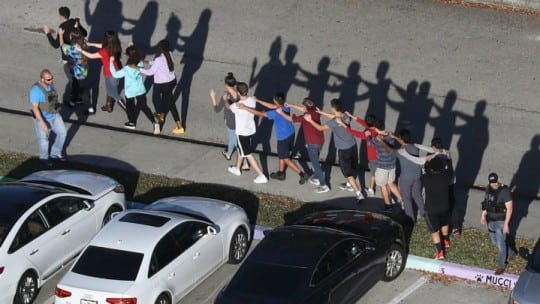
The horrific school shooting in South Florida that left 17 people dead and roughly twice that number wounded was the 25th fatal, active school shooting since Columbine in April 1999. While the shootings share many characteristics, could the two have been more different in terms of communication?
During that awful day in suburban Denver, a work colleague, sitting in a home office literally across the street from Columbine High School, had no idea the massacre was occurring. During a phone session with him in the midst of the situation, I mentioned seeing a CNN report and asked him what he thought. As noted above, that the incident was occurring was a total surprise to him.
Had Columbine happened today, of course, countless email breaking news and texts would have ruptured my colleague’s consciousness. Had he subscribed to police alerts, it’s likely he’d have received a message from law enforcement urging him to remain inside his home.
And social communications are one of the first pieces of evidence police use to find clues that may help prevent future shootings. Broward County Sheriff Scott Israel said yesterday police already had begun examining the shooting suspect's social media pages. "Some of the things that have come to light are very, very disturbing," he said.
Students Provide The Footage
Another difference between Columbine and the shooting at Marjory Stoneman Douglas High School, of course, is that students with mobile phones captured yesterday’s scenes of terror on social video. Within moments their video footage, some of it showing dead students, was on Twitter and Snapchat. By contrast, exterior images of the school dominated Columbine coverage, shot by news crews. Yesterday student footage was front and center; the news media was bypassed.
A picture is worth a thousand words. How many words are social images worth? Those videos, awful as they were, might be transformative in a future gun control debate similar to how images of the Vietnam War helped shape the country's mood. Time will tell.
In terms of official communications, school administrators are supposed to contact parents when dangerous situations occur. While we’re unsure if that happened yesterday, one could argue it might have been a fool’s errand—was there a student at the school without a mobile phone?
On the other hand, when communicators are bypassed, issues can arise. Tweets from people other than school personnel said 20 were killed, for example.
Another issue was the lack of vetting of social posts. We've seen this previously, of course. For example, during the Las Vegas shooting in October 2017, Facebook and Google linked to stories that misidentified the killer and contained other false information.
Yesterday several people purposely posted incorrect information. For example, while many families who’d not heard from their loved ones at the school appealed to the internet community for information, bad actors tweeted that all were accounted for and urged people not to respond to such appeals. Others posted that appeals to gather information about unaccounted-for students were hoaxes.
The shooting also highlighted the pulpit celebrities and organizations have with social communications. Entertainers Ellen DeGeneres, Reese Witherspoon, Britney Spears and Mark Ruffalo were just some of the celebs to react to the massacre
Prayers without accordant action are silent lies told to oneself, heard by no God, amounting to nothing. Action is the language of truth, the prayers of the Saints.
— Mark Ruffalo (@MarkRuffalo) February 14, 2018
Some celebrities decided to highlight the work of organizations involved in gun control, such as this tweet from Mia Farrow, who touted the Center for Responsive Politics, a nonpartisan research group.
These lawmakers took the most money $$ from the @NRA pic.twitter.com/TzJtZ5lgMq
— Mia Farrow (@MiaFarrow) February 14, 2018
Seth Arenstein is editor of PR News. Follow him @skarenstein
